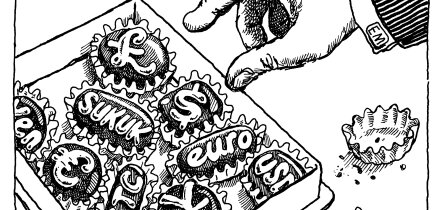For this week's Learning Curve in PDF format, click here.
The standard market model for pricing collateralized debt obligations is base correlation, but it suffers from known problems. A new class of models is emerging that is more sophisticated yet practical to implement and which gives new ways of seeing skew and risk in the credit correlation market.
Beyond Base Correlation
The base correlation method of pricing CDOs has several disadvantages. In particular, it easily allows arbitrage in both theory and practice. This tests banks' ingenuity to work round the problems and reduces the market's overall confidence in the model. Secondly, it is hard to extend the model to price bespoke baskets and, especially, more exotic products such as CDO squareds.
On a technical level, the problems with base correlation and its underlying Gaussian copula model are that it is not properly dynamic, the tails of its probability distribution are too thin and it does not reflect the way that credits actually move in the market. There are two key economic ideas to moving beyond this approach.
The first economic idea behind a new model is that the tails of the Gaussian distribution are too thin to model the credit market accurately. Although suitable for other asset classes, the Gaussian is not good for extreme out-of-the-money options. But almost all credit-default events are extreme events which are controlled by the tail of the distribution.
The second idea is that credits' routes to default can vary. Some credits, such as Argentina, default after their credit spread has widened out over a period of time. Others, such as Parmalat, default "out of the blue", with little prior change in their credit spreads. The Gaussian copula only describes the first sort of default and does not allow the second type. A good model needs to allow not just both extremes, but also the middle ground in between them.
Gamma Process
A process that achieves these aims is the Gamma process. This is a random process that has been known to science for many years and has sometimes been applied in finance. It has three interesting properties. (1) It is an increasing process made up of positive jumps. The jumps have random size and occur at random times. (2) The distribution of the process at any time t is the gamma distribution. (3) The process is Markovian with independent increments, which means future changes are independent of the past performance.
In symbols, it is written *(t;*,*) where t is the time variable, the parameter * (gamma) controls the intensity of jumps and the parameter * (lambda) controls the inverse-size of the jumps. A higher gamma increases the frequency of jumps, and a higher lambda makes them smaller. The distribution of the process at time t is the well-studied gamma distribution with density
, x > 0,
where *(*) is the gamma function. We can see that the tails of the distribution are approximately exponential which, as we require, is heavier than Gaussian tails.
The model for an individual credit is that the structural value of the entity is driven by an exponential Gamma process martingale
, where .
We assume that the entity has defaulted by time t if S(t) is below a threshold. The threshold can be calibrated to match the market's survival probability for that entity. This simple model allows the value of the firm to grow slowly in normal circumstances (and for its credit spread to tighten) but as bad news randomly arrives via the Gamma process, the firm's value jumps down and the spread jumps up or the entity defaults. The picture shows an example path of S(t) and the default threshold level.
Two limiting cases are interesting. As * increases (keeping
) the process reduces to the log-normal Black Scholes process, which corresponds to the Gaussian copula and Argentina-style defaults. As * decreases to zero
( ) the process becomes the Parmalat-style model with constant default intensity
,where , an exponential default time.
For values of gamma in between these two extremes, the behaviour will be a mixture of trend and/or unexpected large jumps. The gamma parameter can be interpreted either as "lumpiness" (a low gamma means jumps are large but infrequent) or as credit spread volatility (spread volatility is approximately equal to ˆ*).
Correlation Model
There are two tricks to help convert the Gamma process into a model of credit portfolio behaviour. Firstly we can simplify the default condition. The simplification says that the entity has defaulted by time t if the Gamma process *(t;*,1) is above a threshold k(t). We can calibrate k(t) to match the entity's survival probability to time t. Here the lambda parameter is redundant due to its presence merely as a scaling factor, so it can be set to one.
Secondly we can create a correlated basket by having a common global Gamma process and independent idiosyncratic processes. The total intensity * is divided into the global intensity ** and the idiosyncratic intensity (1-*)*, where * is the correlation between the names. In symbols, we can write the Gamma process of the ith entity as
where, *g(t;**,1) is the common global Gamma process and *i(t;(1-*)*,1) is the idiosyncratic Gamma process. The total, Xi(t), is a Gamma process with intensity * and a unit lambda.
The economic meaning of this model is that the correlation * controls the proportion of an entity's, jumps which are due to the global factor. If * is 10%, then 90% of an entity's jumps are idiosyncratic to that entity, but the remaining 10% of jumps are global jumps which are suffered by all the entities in the basket.
Fitting The Model
The model is driven by just two parameters gamma (jumpiness) and phi (correlation). We can vary these two parameters to match the observed CDO market for liquid baskets.
The results of the calibration for the CDX 125 S7 basket, as at 9-Jan-2007, are shown in the table.
The best fit score is also shown (the root-mean-square error in basis points, excluding the equity tranche). The general fitting quality is quite good. It is not exact since, for each maturity, there are only two parameters but six tranches to fit. There are some errors in the equity tranches, and also in senior and super-senior which are notably tricky to fit. The model can also be adjusted with external fine-tuning factors to match prices exactly if required.
This is useful, but what is equally important is how this model gives new techniques for risk management, and how it can be extended to bespoke structures and other products.
In the second part of this Learning Curve, we will see how to implement the new model in practice for CDOs and other products, how to risk manage with it, and the real lessons to be learned from May 2005.
This week's learning curve was written by Martin Baxter, quantitative analyst at Nomurain London.





